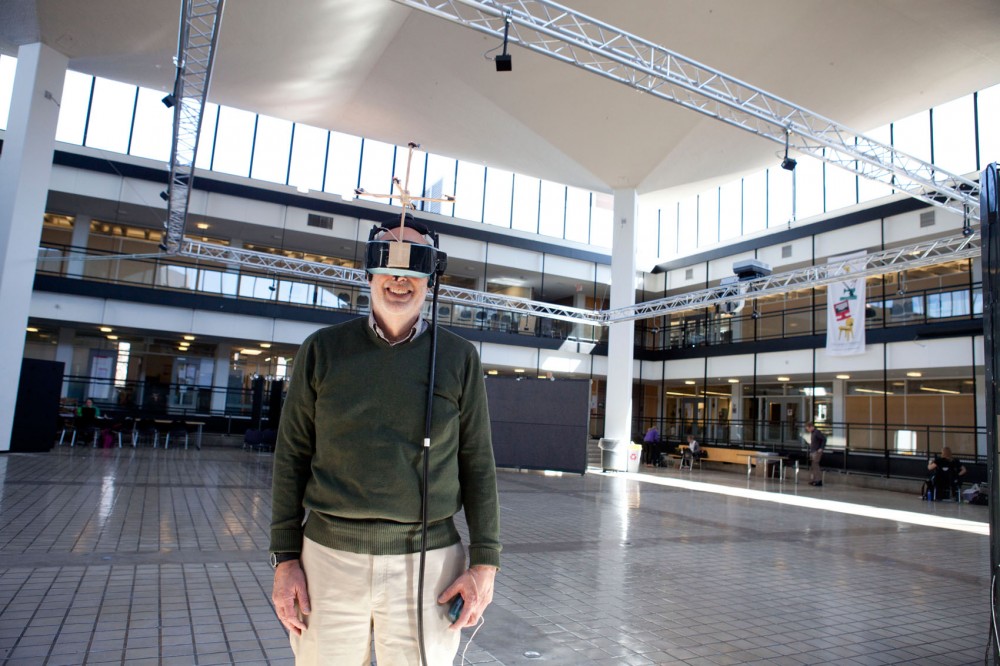Donning a headset, students working in the College of Design’s new virtual reality lab can transform the room into a life-like version of a building.
The lab opened this semester in Rapson Hall for University of Minnesota College of Design students after months of delay and will soon be available to the University at large.
The University originally announced the lab in October. But due to technical problems like wireless system glitches and delayed software updates to suit the new space, it didn’t open for use until a few weeks ago.
“It’s kind of to be expected,” said Lee Anderson, one of the professors who spearheaded the project. “It’s really a world-class system, and we’re pushing the boundaries in several areas, including the size of the space that we’re using, which is really big for a virtual reality system.”
The University already has another virtual reality facility in Walter Library, but Anderson said its small and inaccessible location is not student-friendly. The Walter Library lab is also mostly used for faculty and outside research.
The Rapson Hall space provides both size and location, allowing the lab to be accessible to people outside the College of Design, which makes the lab the first of its kind, Anderson said.
Some students are excited about the new innovations.
“The college is definitely doing a good job of researching and seeing what is important, whether it be in the industry or what other universities are doing,” said Ashley Ochiagha, an undergraduate interior design student.
The project was largely funded through the Digital Design Consortium, an alumni gift-based fund for collaborative design projects, and through outside grants, including a grant from the National Science Foundation, said College of Design spokesman Trevor Miller.
Midway through spring semester, Anderson began teaching an architecture studio class using the lab. Its technology allows students to “walk through” computer renderings of their designs by wearing a head-mounted screen.
The ability to do this, Anderson said, is crucial for the field itself because it allows clients to see designs before completion and also lets designers preview their work during the design process.
“It’s very useful for a designer to be inside of this thing that they’re actually designing. And then, as the design progresses, they may make decisions based on how they feel things are going in virtual reality,” Anderson said.
He predicts the facility will be useful to a number of departments within the college, not just architecture students.
Merchandising students can use virtual reality to gauge consumer responses to potential store layouts, and graphic design students can preview large-scale designs.
“It isn’t just billboards,” Anderson said, citing the photograph of Sir Tyrone Guthrie displayed on the side of Minneapolis’ Guthrie Theater as an example of such a design.
But Patrick Puckett, an undergraduate graphic design student, said information about the lab’s development hasn’t been communicated effectively to students outside of the architecture program.
“I feel like they should’ve been doing more with it faster and then having people come and use it whenever they could,” he said. “I’ve been really interested and would love to do that. I just haven’t heard that it’s actually being done and when it will be done.”
The lab also received interest from local architecture firms. The firms are trying out the technology in collaboration with Anderson’s class. Miller said the pilot program is proceeding well.
“This is just the first step,” he said.
Students and faculty alike are very happy with the space, Anderson said. The college is discussing a grand opening event, but an official date has yet to be set.
“We want that opening affair to be everything it can be, and so our first aim is to get the students using it,” Anderson said. “The grand opening is something that we will do as soon as the time seems right for it.”


